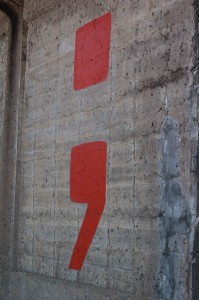How to use a Semicolon

The Semicolon seems to be one of the most “feared” punctuation because it appears hard to use. Is it a period? Or is it a comma? A mixture of both? None of it?
The correct answer would be: a mix of both. Similar to a comma, the semicolon indicates an audible pause between two clauses – yet the pause isn’t as long as if the end of a sentence would have been indicated by a period.
However, do not make the mistake to confuse a semicolon for a colon. They can not be used interchangeably:
- Correct: Here’s what we’ll do: We clean the attic first, then move on to the basement.
- Incorrect: Here’s what we’ll do; We clean the attic first, then move on to the basement.
Using the semicolon
The basic function of a semicolon, is to link two independent sentences while getting rid of the long pause in between which a period would create. This way, one can get rid of unnecessary conjunctions like and or but. Consider the following sentences:
My wife wants to go to Hawaii for the holidays. [long pause] I'd prefer France.
My wife wants to go to Hawaii for the holidays; I'd prefer France.
Effectively, the gap in between two usually independent clauses is narrowed down. This could be important either for emphasis or the flow of reading a writer would want to create.
Another function of a semicolon is to separate listings that are further specified by the usage of commas already. This way, confusion about which items belong together is prevented.
The following people are nominated for the award: Markus, USA; Jerome, France; Justin, South Africa; Antonio, Italy.
One usage of the semicolon is especially interesting for those that engage in fictional writing. When writing a story, novel, or book, it is essential to let your characters talk. Such direct speech acts, however, can be interrupted by actions or descriptions. In these cases, the use of a semicolon is advised.
"I don't know what to do anymore," Alexa said; "this situation just continued and hardened."
A far less common use of the semicolon is to place it before words and terms like however, of course, namely, for example, thus, etc.
We can go to the beach later on; however, I think the weather will change soon.
In these cases, it is not only perfectly fine but even more common to use a comma. The use of the semicolon in this context can mostly be seen in academic texts and reports.
When NOT to use it
As stated above, the semicolon should never be used interchangeably with a colon. A colon introduces a list of items, a long quote; or is used if a consecutive sentence describes, explains, expands, or illustrates the first sentence. In such cases, a semicolon should never be used.
Furthermore, semicolons should not be used together with conjunctions like and, but, or, nor, for, yet, and so. Use a comma instead.
This cake look delicious, but I really shouldn't eat it.
The only exception to this rule occurs, when the first clause contains items or sequences, that have been separated by a comma already.
I don't think that Sally knows what she's doing, if she ever does; but we have no choice but to trust her with this.
If you feel insecure about the usage still, or if you want to make extra sure that your usage of the semicolon is correct, you can always restore to using a free spellchecking service that supports punctuation issues.
